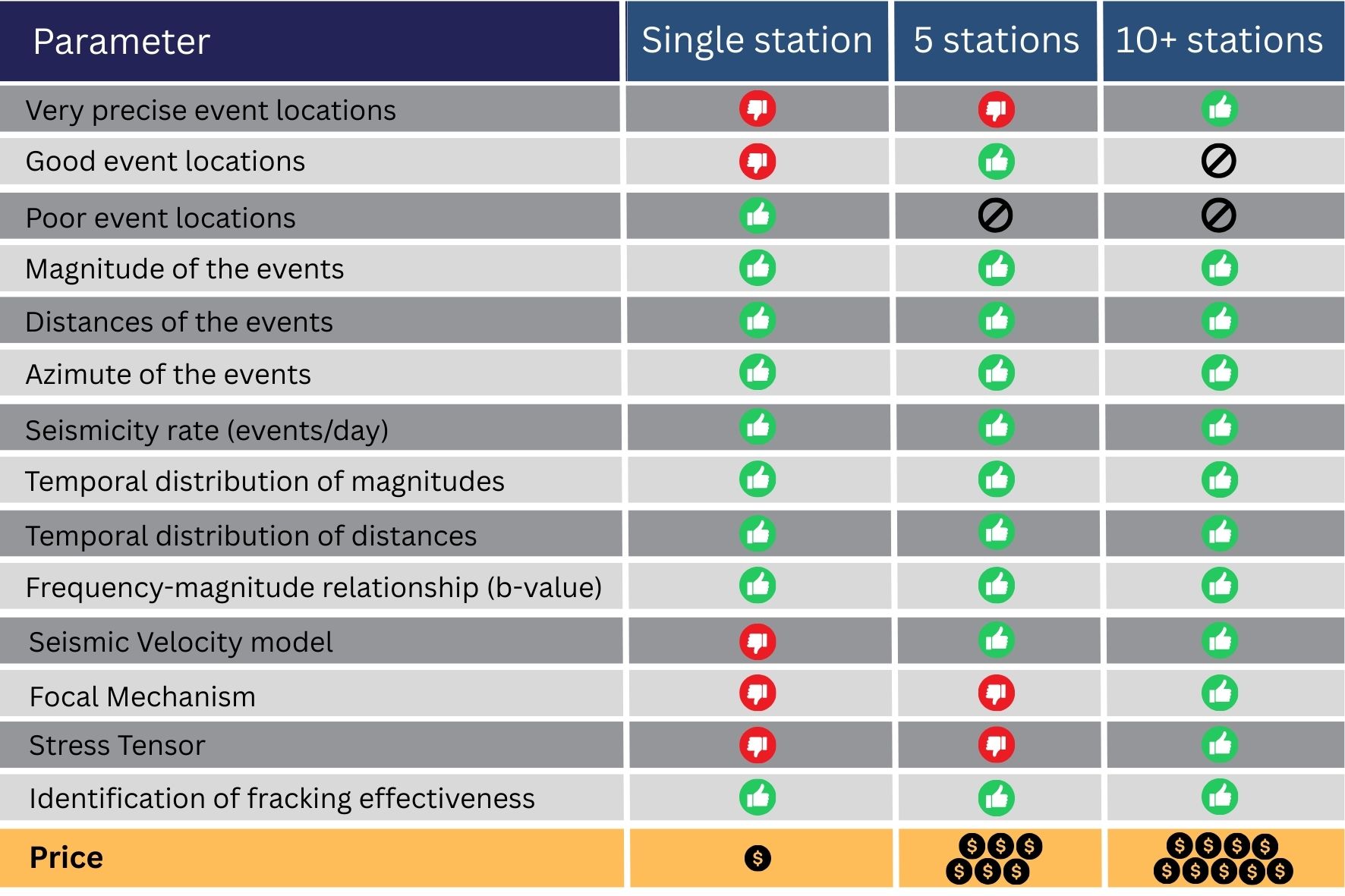Microseismic monitoring is a passive seismic technique that uses microearthquakes, which are similar to natural earthquakes but with a lower intensity, to monitor fracture activities in geothermal operations, underground gas storage, mining, enhanced oil recovery, oil-producing or gas-producing pays, mainly during hydraulic fracturing or water-injection operations that can induce small quakes.
In this way, the microseismic monitoring is an important tool to check the effectiveness of hydraulic stimulation production wells, giving information about the fracture systems, heterogeneity, and other characteristics of a reservoir, helping engineers to maximize oil and gas recovery. It could give the stress tensor in the reservoir and focal mechanism of each micro-earthquake created during the fracking process.
Mainly in oil and gas production, it is important to make informed decisions regarding reservoir management, and microseismic monitoring can provide heights, lengths, orientations, geometries, and spatial arrangements of fissures produced. However, it can also be used in simple and economical ways to check how effective the fracturing process was.
At this point, it is important to understand that because the microseismic events are typically registered with magnitudes smaller than 1.0 (or 0.0) on the Richter scale, it is a challenge to have a good registration. Because of this, VERACRUZ uses very sensitive seismometers that are hundreds of times more sensitive than a normal geophone. In fact, the microseismic events usually do not cause any noticeable shaking at the surface and are not felt by humans. However, the seismic waves can be detected and recorded using very sensitive seismometers on the surface or underground sensors installed in wells. Our standard is to use highly sensitive sensors installed on the surface, which are normally hundreds of times more sensitive than seismic geophones.
Until today, microseismic monitoring is probably one of the best tools to evaluate the effectiveness of hydraulic fracturing to increase oil and gas production.
VERACRUZ offers microseismic monitoring using large and dense seismic networks to give a perfect view of the reservoir stimulation. However, we also offer an economical service using a smaller number of seismographic stations, which provides less information but still offers excellent value to our clients. Of course, the monitoring that we and our competitors perform using multiple seismographic stations is simpler and offers excellent results to reveal geological details. However, VERACRUZ also offers services using only one seismographic station — a more laborious but more eco

With one seismographic station, the locations of seismic events are very uncertain, and it is not possible to determine focal mechanism and stress tensor, BUT it is possible to have (1) approximate locations of the events (epicentral distance and azimuth of the event), (2) magnitudes, (3) the temporal distribution of magnitudes and number of events per hour, (4) the determination of the frequency-magnitude relationship with the b-value, and it is sufficient to see the effectiveness of hydraulic fracturing. It is a example of our simplest service, but for sure, we do offer the complete microseismic monitoring with dense seismic network that permit us to have a very good position for the source of each event, the focal mechanism and the stress tensor. Let us know your needs and we will create a service with the perfect size for your project.